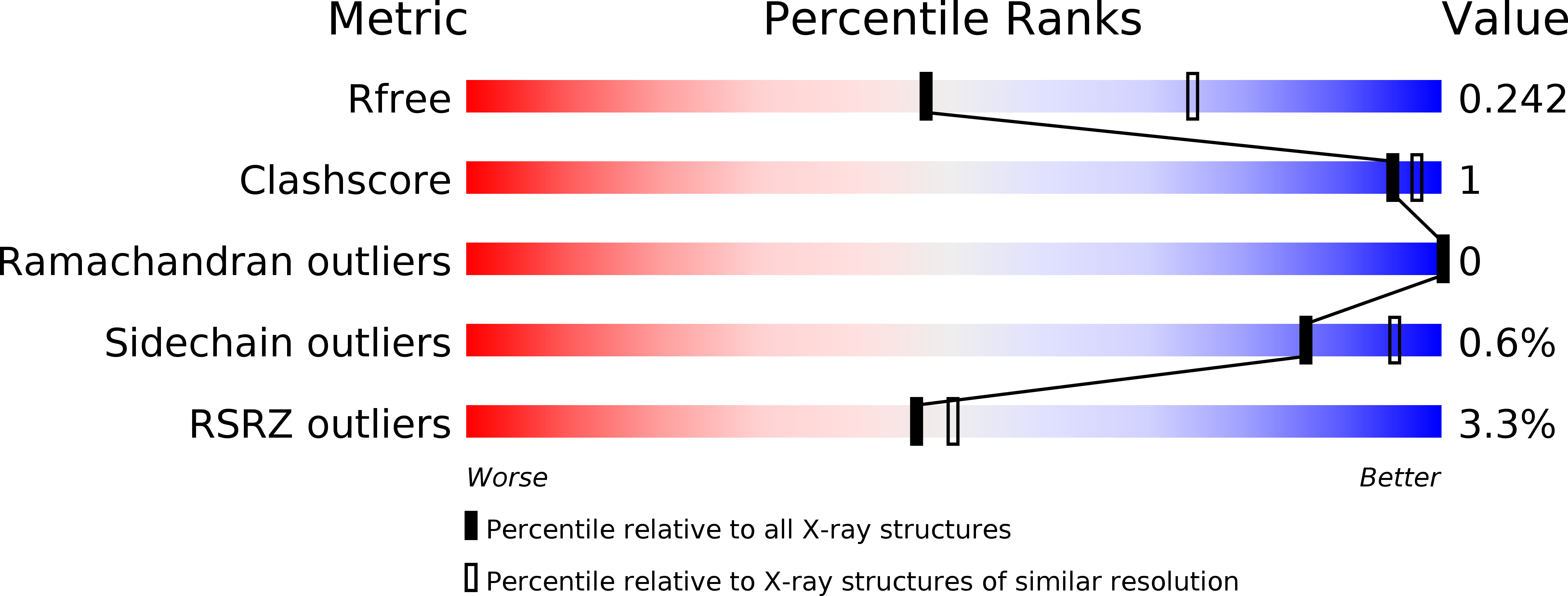Non-native ligands define the active site of Pennisetum glaucum (L.) R. Br dehydroascorbate reductase.
Krishna Das, B., Kumar, A., Maindola, P., Mahanty, S., Jain, S.K., Reddy, M.K., Arockiasamy, A.(2016) Biochem Biophys Res Commun 473: 1152-1157
- PubMed: 27067046
- DOI: https://doi.org/10.1016/j.bbrc.2016.04.031
- Primary Citation of Related Structures:
5EVO, 5IQY - PubMed Abstract:
Dehydroascorbate reductase (DHAR), a member of the glutathione-S-transferase (GST) family, reduces dehydroascorbate (DHA) to ascorbate (AsA; Vitamin-C) in a glutathione (GSH)-dependent manner and in doing so, replenishes the critical AsA pool of the cell. To understand the enzyme mechanism in detail, we determined the crystal structure of a plant DHAR from Pennisetum glaucum (PgDHAR) using Iodide-Single Anomalous Dispersion (SAD) and Molecular replacement methods, in two different space groups. Here, we show PgDHAR in complex with two non-native ligands, viz. an acetate bound at the G-site, which resembles the γ-carboxyl moiety of GSH, and a glycerol at the H-site, which shares the backbone of AsA. We also show that, in the absence of bound native substrates, these non-native ligands help define the critical 'hook points' in the DHAR enzyme active site. Further, our data suggest that these non-native ligands can act as the logical bootstrapping points for iterative design of inhibitors/analogs for DHARs.
Organizational Affiliation:
Membrane Protein Biology Group, ICGEB, Aruna Asaf Ali Marg, New Delhi, Delhi 110067, India; Department of Biotechnology, Jamia Hamdard University, New Delhi, Delhi, 110062, India.
















